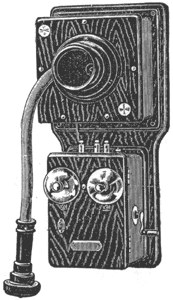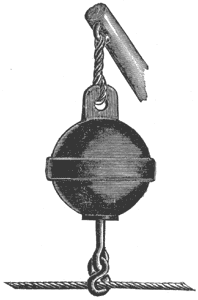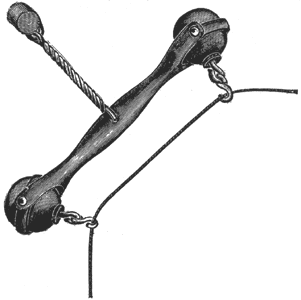Mechanical Telephones, illustrations of insulators for this system
|
[Trade Journal] Publication: Western Electrician Chicago, IL, United States |
||||||
|
Mechanical Telephone.
The accompanying cuts illustrate an improved mechanical telephone system for private
lines. The many uses to which a system of this kind can be applied will be readily seen. It is intended for lines of one mile or less, but it is claimed that it may be operated even at greater distances when the conditions for line construction are favorable. The working parts are inclosed in a handsome polished, hard oil finished case, as shown in Fig. 1, and all metal parts are nickeled. Connections are provided for ground wire and lightning arrester, and if desired attachment can be made with electric bells, burglar and fire alarms. Fig. 2 shows an insulator, which it is claimed is also desirable for electric telephone lines. It is made of rubber incased in a metal shell that thoroughly protects it from the weather. From the rubber hangs a galvanized wire hook, through which passes the line wire as shown in the engraving. Another device, shown in Fig. 3, is the angle insulator. The difficulty experienced in working over sharp or right angles is overcome, it
is claimed, by using the device shown, which is made of two single insulators, pivoted to a malleable iron yoke. The system, known as the Standard telephone, is placed on the market by the Bostwick & Burgess Manufacturing company of Norwalk, O.
|



